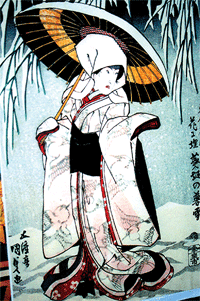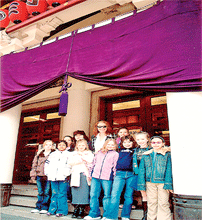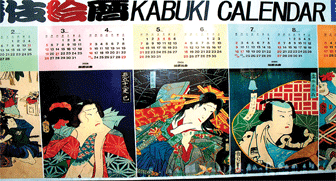The kids found the action (a combination of drama and dance) to be a bit “slow” at times, but enjoyed the elaborate stage settings, and some impressive tumbling in the battle scene. If the story was a bit difficult to follow (even with English headsets), it was balanced out by the novel concept that eating is encouraged in this “fancy” theater!
The kids had plenty of questions, and the excellent English brochures had all the answers:
“Why do Japanese people need headsets if the play is in Japanese?”
Well, not only is the language old (Kabuki was developed in Edo times), but each stylized movement is symbolic. The narration explains the detailed plot as it unfolds.
“Are the people yelling out from the audience part of the show?”
No, these appreciative shouts, (called Kakegoe in Japanese) are from serious followers of Kabuki who know exactly when to call out the “Yago” (House Name) of their favorite actor as he strikes a dramatic pose. The kids really enjoyed this exciting element of audience interaction.
For this young group, seeing a live Kabuki performance in the famous historic setting of the Kabuki-za was definitely a cultural learning experience, and will be a special memory from their years in Japan.



